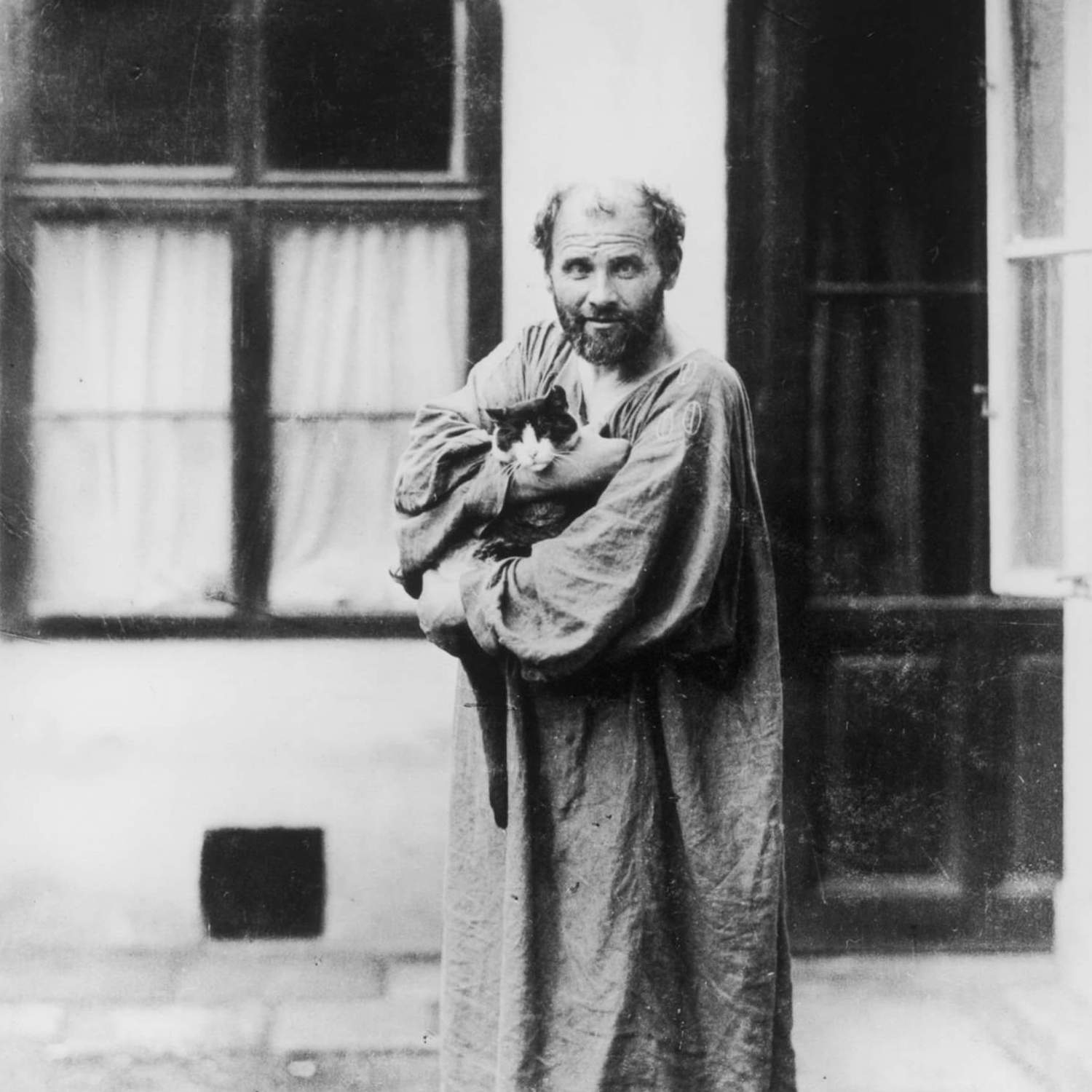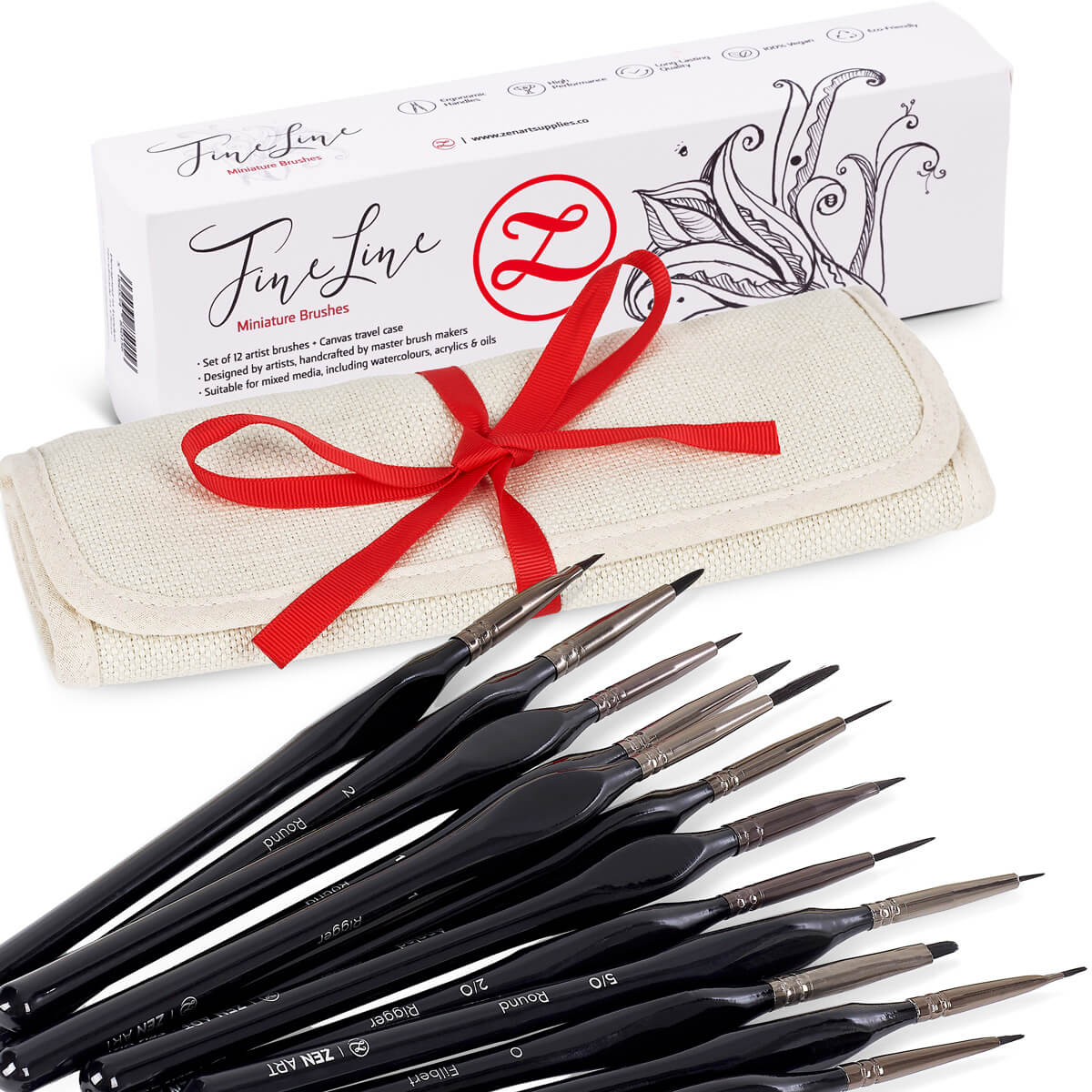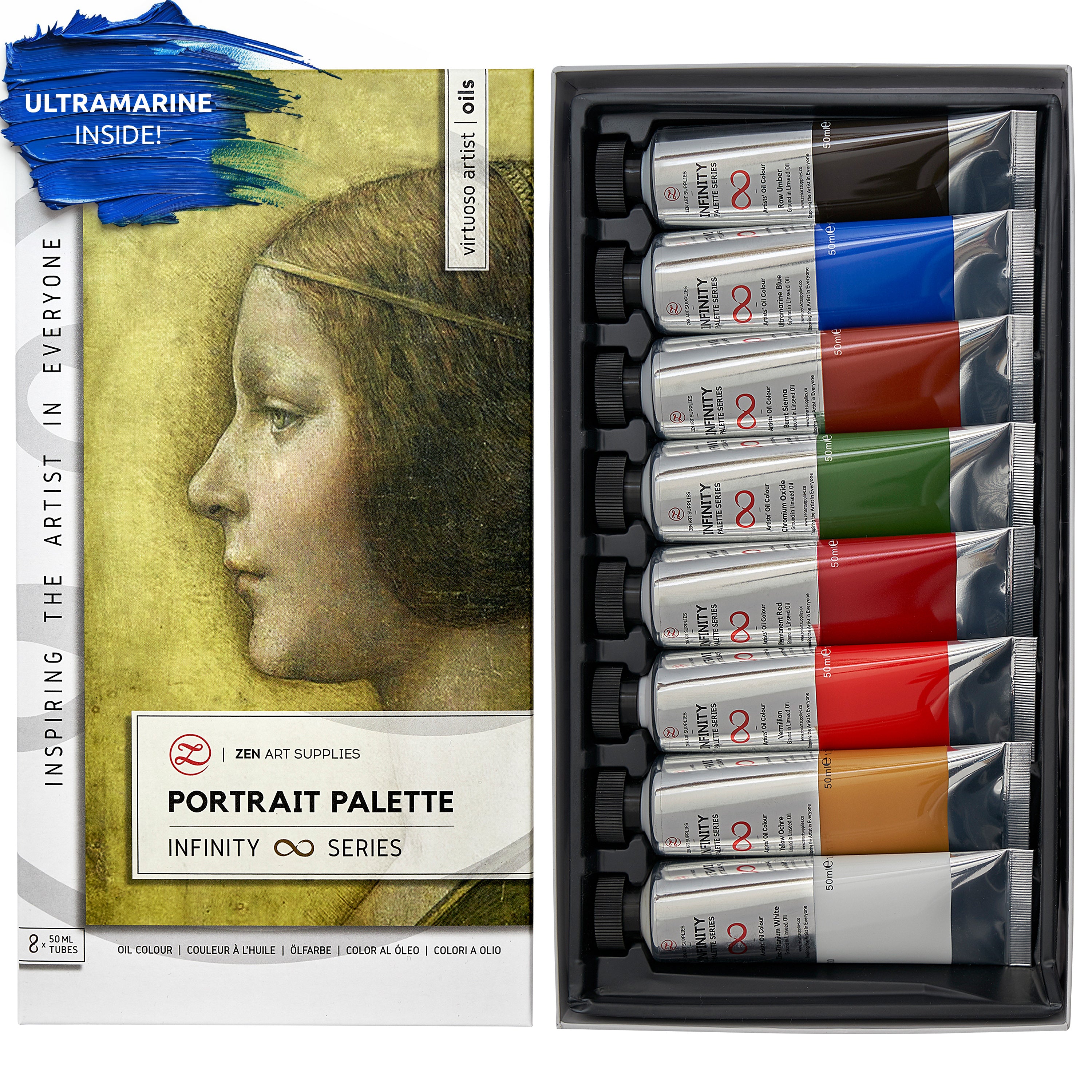Everyone knows Gustav Klimt for his iconic painting The Kiss. It’s big, it’s shiny, it’s an icon of art history and pop culture. We’ve even featured it in our previous post on the best love paintings of all time.
But there’s more to Gustav Klimt than his Golden Period.
The Austrian painter was quite controversial for his time. For one, Klimt loved love—there’s something to be said about the way he portrayed lovers and human sexuality in his art. I see his work as a passionate and gilded perspective on raw human desire. Vienna’s society during his time, however, would disagree. Suffice to say, it was a huge art scandal.
Klimt was also the co-founder and former head of the Vienna Secession: a creative movement done in protest of conventional and traditionalist art. His pioneering work would pave the way for Art Nouveau and the total progression of Austrian art and architecture.
Who was Gustav Klimt and what was he known for?

"Art is a line around your thoughts." - Gustav Klimt
Name: Gustav Klimt
Date of Birth: 14 July 1862
Place of Birth: Baumgarten, Austrian Empire
Date of Death: 6 February 1918 (55 years old)
Place of Death: Vienna, Austria-Hungary
Known for: Gustav Klimt was an Austrian painter best known for The Kiss, painted at the height of his Golden Phase. He was a notable member of the Vienna Secession, a group of Austrian artists who rejected the traditionalist art style dominated by the Austrian Academy of Art.
8 Facts about Gustav Klimt

We don’t know a whole lot about Gustav Klimt’s life. Though his art looks opulent and lavishly decorative, the artist himself kept his private life, well, private. Many artists have written about their own works, but Klimt rarely discussed his work.
Honestly, he didn’t need to. His art speaks for itself. We can only speculate on what inspired his avant-garde creations.
In honor of his 160th birth anniversary, let’s get to know the great symbolist painter Gustav Klimt one fun fact and beautiful painting at a time.
He was born to a creative family and showed his talent at an early age
Gustav Klimt was born to Anna Klimt and Ernst Klimt in Baumgarten—somewhere near Vienna in the (then) Austrian Empire. His mother was talented in music and his father was a gold engraver. He was the second son out of seven children. Gustav Klimt and his brothers Ernst and Georg all displayed creative talent as children having been taught how to paint by their father.
Klimt attended art school at the age of 14, winning a scholarship to the Vienna School of Arts and Crafts (now University of Applied Arts Vienna). There he took up architectural painting and studied from 1876 to 1883. However, during this time, he lived in poverty.
Before even graduating, Klimt began his professional artistic career in interior painting. He received many commissions. In 1888, Klimt’s murals earned him the Golden Order of Merit from Emperor Franz Josef I of Austria.
He was a co-founder and president of the Vienna Secession

In an act of rejecting the traditionalist views of the Viennese art establishment, Gustav Klimt and a handful of artists and architects founded the Vienna Secession.
This movement is central to Vienna’s tradition of Art Nouveau. The artists behind the Vienna Secession envisioned a synthesis of different art forms. They called it the Gesamtkunstwerk, translated as a “total work of art.”
Art, to the Vienna Secession, is harmony. And Klimt’s greatest representation of this philosophy is the Beethoven Frieze. It’s now permanently on display in their historic headquarters, the Secession Building in Vienna.
Gustav Klimt never created a self-portrait
Klimt once said, “Whoever wants to know something about me, they should look attentively at my pictures and there seek to recognize what I am and what I want.”
He claims he never painted a self-portrait, finding himself to be an uninteresting subject. Instead, Gustav Klimt preferred painting women and all their sensual power. Though known for his portraits and murals, Klimt also liked painting landscapes.
Despite his fame and success, Klimt kept his private life, well, private. Art historians can only speculate on his personality. It’s all quite ambiguous. Instead, we must piece together who Klimt was, through his greatest works and his life’s contradictions.
He loved cats and hated public appearances

Despite Klimt’s time in the spotlight, his contemporaries would sometimes describe him as shy. It was far more important to him to keep up his daily artist routine in his studio than make all those public appearances. Klimt saw socializing as a waste of time, something that ruined his creative rhythm.
He much preferred the silence of his studio and the company of his cats. He had, probably, eight or ten of them running among his sketches in his workshop. Klimt knew how chaotic cats could be. But as any cat-lover knows, that’s all part of their charm.
Klimt once said to art critic Arthur Roessler, “Even if they crumple and tear one or the other pieces of paper, it doesn't matter; they only pee on the others, and, you know, it makes the best fixing agent!”
But he loved women more
Though Gustav Klimt kept most of his affairs secret to avoid public scandal, he was a known womanizer. This isn’t surprising—you can see it in his art. It’s even suggested that he had affaiurs with all the women he painted.
Despite this, Gustav Klimt had one enduring relationship with his muse Emilie Flöge. Her sister, Helene, married Klimt’s brother, Ernst the younger. Art historians say The Kiss shows Flöge and Klimt as lovers. Klimt’s last words, allegedly, were to call for Emilie.
It’s said that, with his many mistresses, Gustav Klimt fathered at least 14 children.
Klimt’s works were controversial for being too erotic
Gustav Klimt was instrumental in pushing the Art Nouveau movement in Vienna forward. However, the more conservative art critics labeled his art as pornographic. Though we see his work today as erotic and decorative, they were seen as scandalous. Still, the commissions from high society kept rolling in.
Klimt didn’t let his critics and haters stop him from painting. In fact, he was all the more motivated to keep shaking up the establishment.
The Byzantine period heavily influenced his Golden Phase
Rarely did Gustav Klimt travel outside Austria. He did, however, travel to Ravenna and Venice in Italy. There he saw many gilded Byzantine mosaics. These made such a huge impact on Klimt’s art that he began to work on his Golden Phase.
When you think of Klimt, don’t you think of the golden geometric patterns and gorgeous, ethereal women figures? Klimt’s Golden Phase would become the height of his career. It catapulted him to artistic and financial success. It’s the reason he’s now one of the most expensive artists ever.
Nazis stole his portraits of Adele Bloch-Bauer
Two of Gustav Klimt’s portraits are involved in one of the most famous instances of Nazi art theft in history.
Adele Bloch Bauer was a Viennese socialite who often hosted artists in her home. She married Ferdinand Bloch, a Jewish-Viennese banker and sugar producer. They were an affluent couple and they owned several paintings by Gustav Klimt.
The most famous of their Klimt paintings was, of course, the two portraits of Adele Bloch Bauer—one of them was also known as The Lady in Gold.
Following the Nazi invasion of Austria, Ferdinand Bloch fled Vienna and left behind his art collection. Adele Bloch Bauer had died a few years before. The Nazis then plundered the Bloch Bauer estate and with it, the famous Klimt portraits. These paintings were moved to the Galerie Belvedere after the war. After a lawsuit, they were returned to the Bauer’s heir, Maria Altmann.
6 famous works by Gustav Klimt and where to find them
Now that we've learned a bit about Gustav Klimt's life, let's discover some of his most popular works. If you can, plan a trip to Vienna where most of his masterpieces stand today.
Judith and the Head of Holoferne (1901), Österreichische Galerie Belvedere, Vienna

In the Bible, Judith is a beautiful widow who liberates Israel from invasion by charming and beheading the Assyrian general Holofernes.
Judith was previously depicted by many Renaissance painters, notably Donatello, Sandro Botticelli, and Caravaggio. In previous renditions, it’s hard to separate Judith from her act of violence, but Klimt ignores all that. Instead, Klimt takes the symbolist route.
Here, he casts Judith in a much more sensual—I like to think empowered—light. Holofernes is almost totally excluded from the narrative, his head barely visible in the corner. Judith basks in golden light, proud, sensual, and seductive. There’s not a sword in sight but she still holds her greatest weapon. It’s written all over her face.
Portrait of Adele Bloch-Bauer I (1907), Neue Galerie, New York

My personal favorite of all the Klimt portraits—and not just for its intense history. It’s a true masterpiece of the Symbolist art movement and the most evocative of Klimt’s Golden Phase.
Take a closer look and you’ll see the subject, Adele, wearing the same jeweled choker as in Klimt’s 1901 Judith. Adele Bloch Bauer is clothed in gold and sits on gold too. Both background and clothing are covered ins symbols—some interpreted as erotic, others echoing the Byzantine mosaics Klimt held in such fascination.
Art historians suggest Adele Bloch Bauer was one of Klimt’s many mistresses.
Danaë (1907), Würthle Gallery, Vienna

Another prime example of Klimt’s Symbolist works. In Greek mythology, Danaë is the mother of Perseus by Zeus. her depiction in art is divisive. Some artists portray her as virtuous and others voluptuous.
Gustav Klimt goes full on erotica with this painting. Here, Danaë is barely clothed in imperial purple. In her face, her arousal is clear as the golden and godly stream of raindrops (Zeus’s form in the myth).
The Kiss (1908), Österreichische Galerie Belvedere, Vienna

This work is probably the one most synonymous with Gustav Klimt. It’s peak Viennese Art Nouveau—a towering work of oil and gold leaf.
We argue it’s one of the best love paintings of all time. Wouldn’t you agree?
The Kiss has inspired many more paintings and moments in pop culture. It’s a portrait of two lovers with the look and feel of a mosaic. Opulent and sensual. Two lovers are shrouded in typical Klimt gold, near inseparable if not for the patterns on their garments.
The Park (1910), Museum of Modern Art, New York

Hands down my favorite work by Gustav Klimt. He’s known for his portraits and murals, but for a while Klimt delved into landscapes too.
For one, the composition of this piece is gorgeous. It’s verdant and almost abstract with pulled focus on the leaves of the trees. There’s almost an echo of pointillism here, as seen in Klimt’s blending of greens, yellows, and blues. You realize the setting is a park once your eyes finally graze the bottom of the painting.
The Park is a refreshing turn from the golden decadence we equate with its painter.
Death and Life (1915), Leopold Museum Vienna

We see more clearly here, Gustav Klimt’s obsession with the allegorical and psychosexual. On the left, we see a grinning Grim Reaper looking at a fusion of all of life’s stages. On the right, we see life—all its generations and colors and miracles.
This depiction of life and death is hopeful. All of human life still shines even in the threat of Death’s presence.
Another fun fact: Gustav Klimt may have over-painted Death and Life. Up close, the background looks muddy. Beneath that blue-gray, there are traces of gold. Though his painting won first place at an international exhibit in Rome, it seems Klimt wasn’t fully satisfied with this painting.
What do you like and think of Gustav Klimt?
What’s your favorite painting and newly-learned fact about Gustav Klimt? Have his works inspired you to create something grand and golden, too?
Every month, we feature an icon in art history. Got a favorite artist you want us to cover next? Let us know your thoughts in the comments section below! If you liked this piece, you might love our previous art history blogs like the best love paintings of all time, more about another symbolist painter Paul Gauguin, or even the mystery behind Van Gogh. For more, read the Inspiration section on our blog!
- MEET THE AUTHOR-

Belle O. Mapa is a writer and artist based in Manila, Philippines. She believes that everyone is born with an inner creative spirit—we just need to nurture and discover it on the blank page. Currently, she lives out her passion: writing stories, hosting journaling workshops, and advocating for mental health awareness.



























